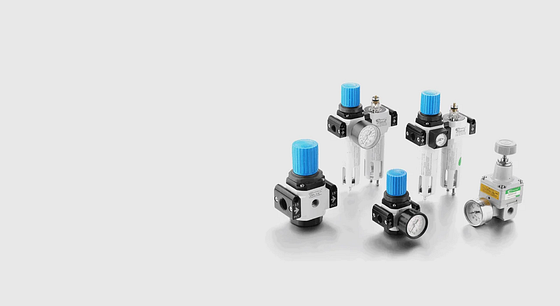Understanding Pneumatic Systems: The Role of Pneumatic Cylinders and Solenoid Valves

Pneumatic systems are widely used in various industries for powering machinery, controlling processes, and performing tasks that require precise and efficient movement. Two essential components of pneumatic systems are pneumatic cylinders and solenoid valves. In this article, we’ll delve into the functions, applications, and benefits of pneumatic cylinders and solenoid valves, shedding light on their importance in pneumatic automation.Пневматический Привод — -pneumatic cylinder
Pneumatic Cylinder:
A pneumatic cylinder, also known as an air cylinder or pneumatic actuator, is a mechanical device that converts compressed air energy into linear motion. It consists of a cylindrical chamber (cylinder) with a piston that moves back and forth within the chamber in response to changes in air pressure. Pneumatic cylinders are commonly used to perform tasks such as pushing, pulling, lifting, and rotating objects in pneumatic systems.
Functions of Pneumatic Cylinders:
Linear Motion: Pneumatic cylinders provide linear motion by converting the energy of compressed air into mechanical force. This linear motion is used to perform various tasks, such as moving conveyor belts, opening and closing doors, and actuating robotic arms.Пневмораспределитель — -solenoid valve

Force Generation: Pneumatic cylinders generate force by applying pressure to the piston, which in turn exerts force on the object being moved. The force generated depends on factors such as the size of the cylinder, the pressure of the compressed air, and the surface area of the piston.
Controlled Movement: Pneumatic cylinders allow for precise and controlled movement, thanks to the ability to regulate air pressure and adjust stroke length. This makes them ideal for applications that require accurate positioning and repeatability.блок подготовки воздуха — -Air preparation units
Applications of Pneumatic Cylinders:
Manufacturing: Pneumatic cylinders are widely used in manufacturing processes for tasks such as material handling, assembly, packaging, and sorting.
Automotive: Pneumatic cylinders play a vital role in automotive manufacturing for tasks such as welding, painting, stamping, and assembly.
Construction: Pneumatic cylinders are used in construction equipment for tasks such as lifting, leveling, and positioning heavy loads.
Aerospace: Pneumatic cylinders are utilized in aerospace applications for tasks such as actuating landing gear, controlling flaps, and operating cargo doors.вакуумный эжектор — -vacuum ejector
Solenoid Valve:
A solenoid valve is an electromechanical device that controls the flow of fluids or gases in pneumatic systems. It consists of a coil of wire (solenoid) surrounding a movable plunger or armature, which is actuated by an electrical signal. When the solenoid is energized, it creates a magnetic field that moves the plunger, allowing fluid or gas to flow through the valve. Solenoid valves are commonly used to control the flow of compressed air in pneumatic systems.
Functions of Solenoid Valves:
Flow Control: Solenoid valves regulate the flow of fluids or gases in pneumatic systems by opening or closing in response to electrical signals. This allows for precise control over the movement of pneumatic actuators and other components.
On/Off Operation: Solenoid valves provide rapid on/off operation, making them suitable for applications that require quick response times and frequent cycling.
Remote Control: Solenoid valves can be remotely controlled using electrical signals, allowing for automation and integration with programmable logic controllers (PLCs) and other control systems.
Applications of Solenoid Valves:
Pneumatic Systems: Solenoid valves are essential components of pneumatic systems for tasks such as controlling the movement of pneumatic cylinders, actuating pneumatic tools, and regulating air flow in pneumatic circuits.
Fluid Control: Solenoid valves are used in fluid control systems for applications such as irrigation, water treatment, HVAC (heating, ventilation, and air conditioning), and industrial processes.
Medical Equipment: Solenoid valves are utilized in medical equipment for tasks such as controlling the flow of gases in anesthesia machines, ventilators, and medical air systems.
Automotive: Solenoid valves play a role in automotive systems for tasks such as controlling fuel injection, emissions, and transmission fluid flow.
Pneumatic cylinders and solenoid valves are essential components of pneumatic systems, providing the mechanical motion and fluid control necessary for a wide range of industrial, commercial, and residential applications. From manufacturing and automotive to construction and aerospace, pneumatic systems rely on these components to perform tasks efficiently, accurately, and reliably. By understanding the functions, applications, and benefits of pneumatic cylinders and solenoid valves, engineers, technicians, and designers can optimize pneumatic systems for enhanced performance, productivity, and safety.